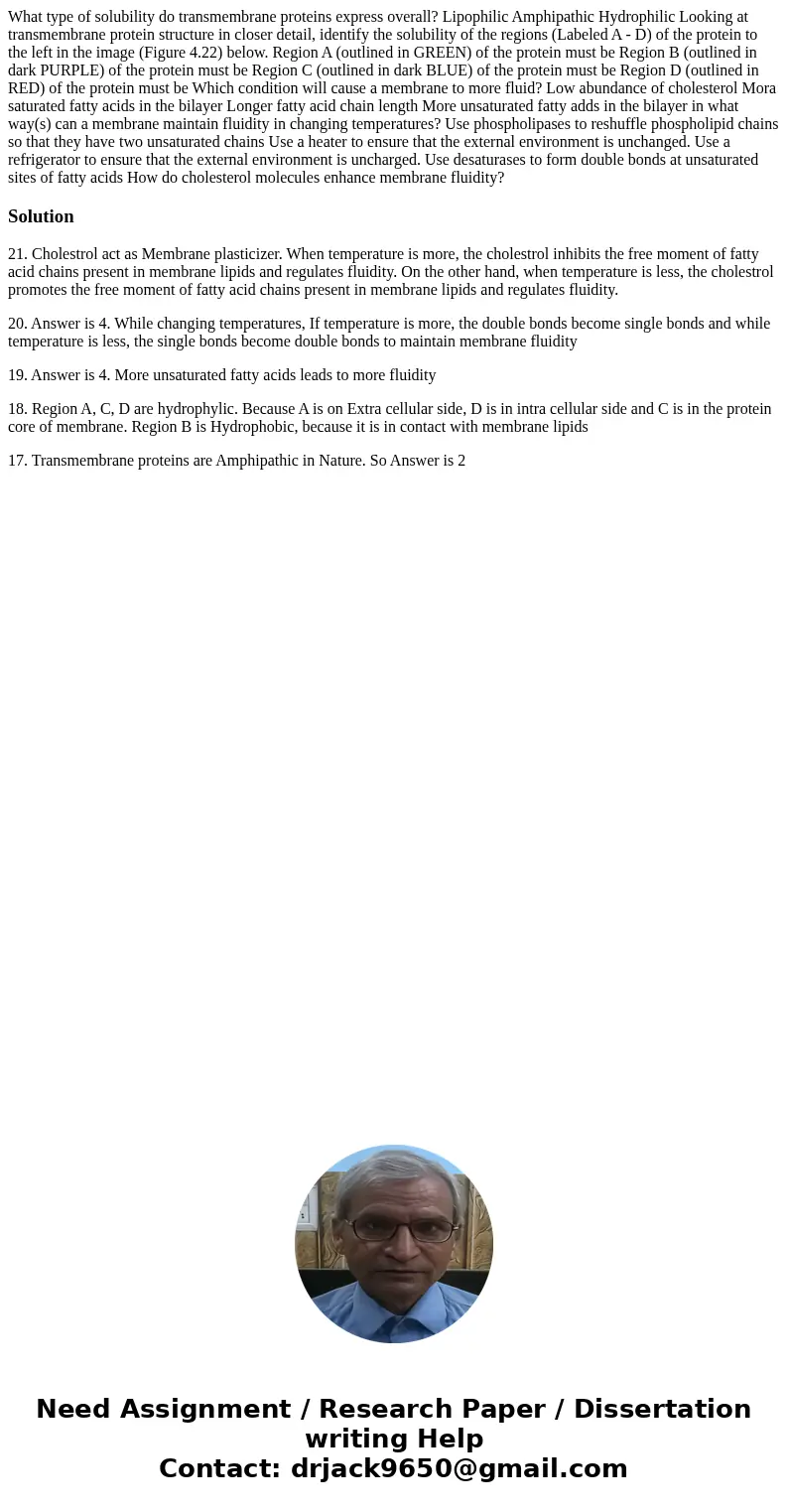What type of solubility do transmembrane proteins express overall? Lipophilic Amphipathic Hydrophilic Looking at transmembrane protein structure in closer detail, identify the solubility of the regions (Labeled A - D) of the protein to the left in the image (Figure 4.22) below. Region A (outlined in GREEN) of the protein must be Region B (outlined in dark PURPLE) of the protein must be Region C (outlined in dark BLUE) of the protein must be Region D (outlined in RED) of the protein must be Which condition will cause a membrane to more fluid? Low abundance of cholesterol Mora saturated fatty acids in the bilayer Longer fatty acid chain length More unsaturated fatty adds in the bilayer in what way(s) can a membrane maintain fluidity in changing temperatures? Use phospholipases to reshuffle phospholipid chains so that they have two unsaturated chains Use a heater to ensure that the external environment is unchanged. Use a refrigerator to ensure that the external environment is uncharged. Use desaturases to form double bonds at unsaturated sites of fatty acids How do cholesterol molecules enhance membrane fluidity?
21. Cholestrol act as Membrane plasticizer. When temperature is more, the cholestrol inhibits the free moment of fatty acid chains present in membrane lipids and regulates fluidity. On the other hand, when temperature is less, the cholestrol promotes the free moment of fatty acid chains present in membrane lipids and regulates fluidity.
20. Answer is 4. While changing temperatures, If temperature is more, the double bonds become single bonds and while temperature is less, the single bonds become double bonds to maintain membrane fluidity
19. Answer is 4. More unsaturated fatty acids leads to more fluidity
18. Region A, C, D are hydrophylic. Because A is on Extra cellular side, D is in intra cellular side and C is in the protein core of membrane. Region B is Hydrophobic, because it is in contact with membrane lipids
17. Transmembrane proteins are Amphipathic in Nature. So Answer is 2

 Homework Sourse
Homework Sourse